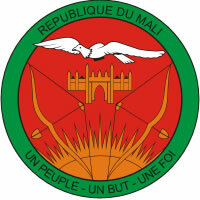Soils form from the decomposition of rocks over time, that is, after a period of thousands or even millions of years, the rocks will erode and transform into small fragments that, together, will compose the ground. This process is done by the action of water, wind and living beings.
Thus, as the rocks that gave rise to the soils vary, as well as the way in which the process took place, different types of soil emerge. Therefore, it is important to understand them, as their characteristics will tell how they are, whether they are fertile or not, whether they are deep or shallow, among other factors.
Brazil is known for being an extremely fertile environment, and much of this fertility is due to the composition of its surface. Thus, the types of soil in Brazil vary from region to region, but they are divided into four main forms: alluvial, terra roxa, massapê and salmon. Remember that these are just the MAIN types, there are a range of other soil types in Brazil.
Purple Earth: type of soil that emerged from rocks of volcanic origin, the basalts. Despite being called by that name, these soils have a more reddish appearance. They are found in the states of Minas Gerais, Goiás, Mato Grosso and São Paulo, which means that, in a distant past, part of these areas harbored volcanoes, which no longer exist.
Alluvial: These are soils that are formed from sediments (rock fragments) coming from other places and transported by the action of water and wind. They are found in several areas of the Brazilian territory, in floodplain regions and close to rivers and watercourses. Despite not being as fertile, they have a high agricultural potential.
massape: It is a darker, almost black, clayey and very fertile soil located along the northeastern coast. It forms from the decomposition of limestone, gneiss and other rocks, and in the rainy months it becomes wet and sticky; in times of drought, it becomes more rigid.
salmon: It is a soil from the decomposition, mainly, of granite. It is distributed in areas of the Midwest, Southeast and South of Brazil. It is very sandy and less fertile than the others, in addition to having a certain level of acidity. However, with the right techniques, it can also be used in agriculture.
Terra Roxa soil, important for agriculture *
_______________________
* Image credits: Leandro Kibisz / Wikimedia Commons
By Rodolfo Alves Pena
Graduated in Geography


